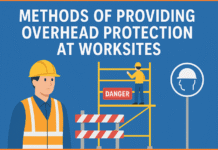Confined Vapor Cloud Explosion (CVCE) is one of the most dangerous types of explosions that can occur in industrial environments, especially in facilities dealing with flammable gases, liquids, or chemicals. These explosions are characterized by the ignition of flammable vapor-air mixture within a confined or semi-confined space, such as a process vessel, storage tank, pipeline, or enclosed building.
Contents
What Triggers CVCE?
A CVCE typically occurs through the following sequence:
- Release of Flammable Vapor: A leak or accidental release of a flammable substance creates a vapor cloud.
- Confinement: The vapor cloud becomes trapped within an enclosure (e.g., storage rooms, vessels, ducts).
- Air Mixing: The vapor mixes with air to form a mixture within its flammable range.
- Ignition: The mixture encounters an ignition source — a spark, hot surface, static discharge, or flame.
- Explosion: Rapid combustion occurs, producing high temperatures and pressure.
- Structural Rupture: As pressure builds up in the confined space, it eventually exceeds structural limits, leading to violent rupture, shrapnel dispersion, and a devastating blast wave.
Hazards Associated with CVCE
- Blast Pressure Wave: The explosion generates a powerful pressure wave capable of destroying nearby structures and equipment.
- Shrapnel: Fragmented parts of the vessel or building can become high-speed projectiles, causing secondary damage and injury.
- Fire and Thermal Radiation: The explosion can result in extensive fires, posing risks to personnel and further damage to equipment and facilities.
- Toxic Release: If hazardous materials are involved, there is also a risk of toxic chemical release following the explosion.
Examples of Potential CVCE Locations
- Chemical processing plants
- Oil refineries and gas facilities
- Storage tanks and silos
- Enclosed manufacturing units
- Laboratories and R&D centers
Prevention and Safety Measures
Preventing a CVCE requires a combination of engineering controls, administrative measures, and emergency planning:
- Leak Detection and Repair (LDAR): Regular monitoring to identify and fix leaks promptly.
- Ventilation Systems: Ensure that vapors do not accumulate to flammable levels within confined spaces.
- Explosion-Proof Equipment: Use of intrinsically safe devices to minimize ignition sources.
- Gas Detection Systems: Early warning systems to alert personnel of flammable vapor presence.
- Proper Hazardous Area Classification: Designing and operating facilities according to zone-based risk.
- Training and Emergency Response: Equipping personnel with knowledge and drills to handle accidental releases and fires.
Confined Vapor Cloud Explosions (CVCEs) represent a severe industrial hazard due to their potential for catastrophic damage. Understanding the conditions that lead to CVCEs — and implementing rigorous safety practices — is critical to protecting personnel, equipment, and the surrounding environment. Proactive risk management, strict adherence to safety standards, and the integration of reliable detection and control systems are essential in mitigating the risks associated with vapor cloud explosions.





